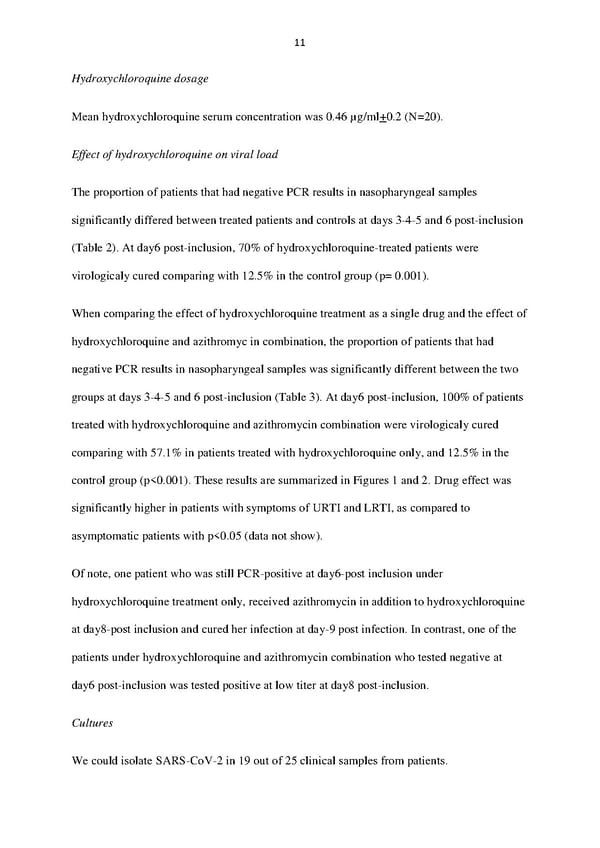11 Hydroxychloroquine dosage Mean hydroxychloroquine serum concentration was 0.46 µg/ml+0.2 (N=20). Effect of hydroxychloroquine on viral load The proportion of patients that had negative PCR results in nasopharyngeal samples significantly differed between treated patients and controls at days 3-4-5 and 6 post-inclusion (Table 2). At day6 post-inclusion, 70% of hydroxychloroquine-treated patients were virologicaly cured comparing with 12.5% in the control group (p= 0.001). When comparing the effect of hydroxychloroquine treatment as a single drug and the effect of hydroxychloroquine and azithromyc in combination, the proportion of patients that had negative PCR results in nasopharyngeal samples was significantly different between the two groups at days 3-4-5 and 6 post-inclusion (Table 3). At day6 post-inclusion, 100% of patients treated with hydroxychloroquine and azithromycin combination were virologicaly cured comparing with 57.1% in patients treated with hydroxychloroquine only, and 12.5% in the control group (p<0.001). These results are summarized in Figures 1 and 2. Drug effect was significantly higher in patients with symptoms of URTI and LRTI, as compared to asymptomatic patients with p<0.05 (data not show). Of note, one patient who was still PCR-positive at day6-post inclusion under hydroxychloroquine treatment only, received azithromycin in addition to hydroxychloroquine at day8-post inclusion and cured her infection at day-9 post infection. In contrast, one of the patients under hydroxychloroquine and azithromycin combination who tested negative at day6 post-inclusion was tested positive at low titer at day8 post-inclusion. Cultures We could isolate SARS-CoV-2 in 19 out of 25 clinical samples from patients.
 Hydroxychloroquine and Azithromycin as a Treatment of COVID-19 Page 10 Page 12
Hydroxychloroquine and Azithromycin as a Treatment of COVID-19 Page 10 Page 12